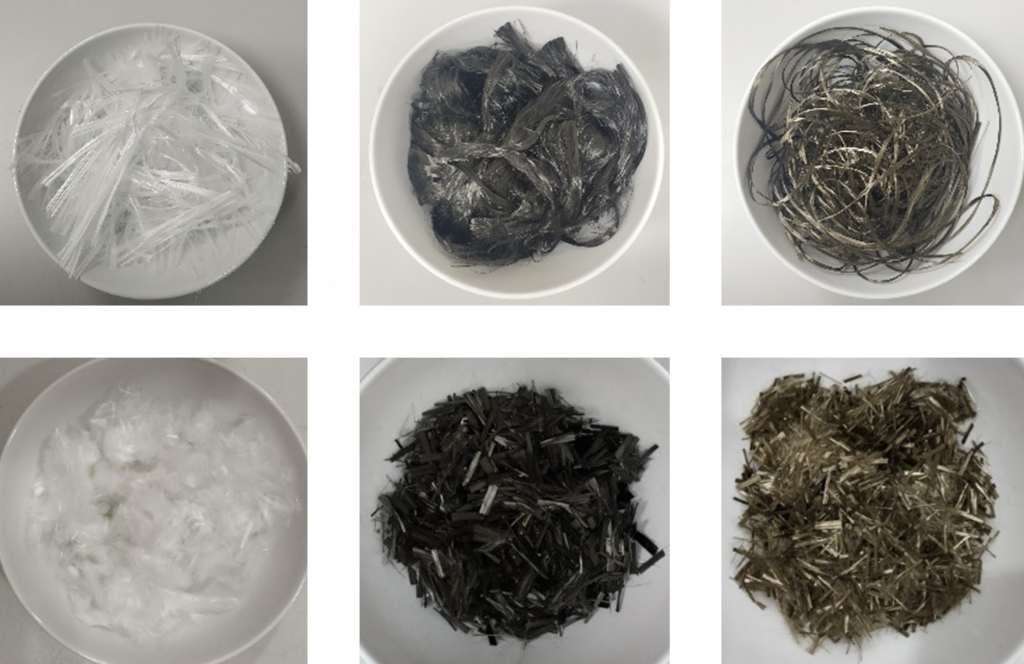Our preliminary study evaluating the effects of waste fibers from the production of high-quality construction textiles on the mechanical properties and durability of mortar has just been published in the Materials Special Issue “Fiber-Reinforced Concrete: Design, Characterization, and Applications.”
You can find the PDF version here and a summary below!
Abstract: In general, 20–25% of the original fibre weight is considered waste in the production of high-quality textiles for the construction sector. A market analysis has shown that in the Republic of Croatia alone, up to 327 tonnes of this waste is produced annually, which is enough to reinforce 50 to 150 thousand m3 of cementitious composites. This preliminary study aims to evaluate the contribution of glass, basalt and carbon fibres generated as waste in the local production of high-performance technical textiles, to the fresh and hardened properties of fibre reinforced mortars. In order to investigate the influence of fibres, three types of fibres in two different lengths (5 and 10 mm) were used, while the amount of fibres was constant. The obtained results show that due to the fibre presence, workability is reduced regardless of the type and length of the fibre. The tested fibres have a negligible effect on compressive strength, but the use of basalt and carbon fibres increases the tensile strength. Furthermore, all three types have positive influence on the toughness and volumetric deformations, although to a greater extent in the use of 10 mm long fibres and carbon fibres.
